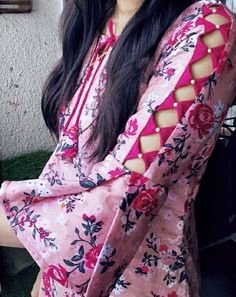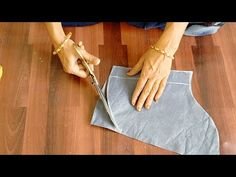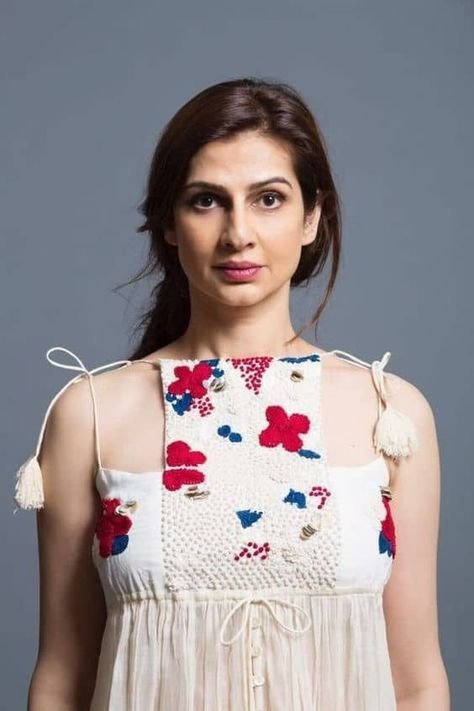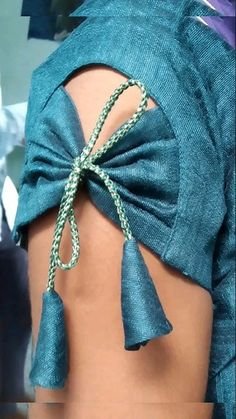Kurti & Sleeve Cutting
Kurtis are versatile garments originating from South Asia, primarily worn by women. They are characterized by their tunic-like structure, varying in length from short to long, and are typically paired with trousers, salwars, or skirts. Kurtis can be simple everyday wear or elaborately embroidered for festive occasions, making them a staple in many wardrobes.

Understanding Sleeve Types: Sleeves play a crucial role in the design and functionality of a kurti. They not only contribute to the aesthetic appeal but also influence comfort and mobility. There are several types of sleeves commonly used in kurtis:
- Basic Sleeve Types:
- Set-in Sleeves: These are the most common sleeves where the sleeve is sewn into the armhole of the kurti.
- Raglan Sleeves: Raglan sleeves extend diagonally from the neckline to the underarm, providing a unique fit and design.
- Kimono Sleeves: These sleeves are cut as an extension of the bodice, creating a wide, unstructured look.
- Bell Sleeves: Bell sleeves flare out from the elbow or forearm, resembling the shape of a bell.
- Puff Sleeves: These sleeves are gathered at the shoulder and banded at the cuff, creating a voluminous appearance.
- Sleeveless and Cap Sleeves:
- Sleeveless Kurtis: These lack any sleeve structure, offering maximum freedom of movement and a casual look.
- Cap Sleeves: These are short sleeves that barely cover the shoulder, providing minimal coverage and a delicate appearance.

Key Considerations for Sleeve Cutting: When cutting sleeves for a kurti, several factors need to be considered to ensure a proper fit and aesthetic appeal:
- Fabric Type: The type of fabric affects how the sleeve drapes and moves. Lightweight fabrics like cotton and chiffon will behave differently compared to heavier fabrics like silk or brocade.
- Kurti Design: The overall design of the kurti, including its neckline and length, should harmonize with the sleeve design chosen. For example, a heavily embellished neckline might require simpler sleeves to avoid overwhelming the design.
- Body Shape: The wearer’s body shape influences sleeve design. For example, individuals with broader shoulders might prefer raglan or kimono sleeves to balance their silhouette.
- Functional Considerations: Consider the purpose of the kurti. A formal kurti might require sleeves that allow ease of movement, whereas a casual kurti might prioritize comfort and breathability.
- Embroidery and Embellishments: If the kurti features embroidery or embellishments, the sleeve cutting should account for these details to ensure they are showcased effectively.
Step-by-Step Guide to Sleeve Cutting: Here’s a simplified guide to cutting sleeves for a kurti:
Materials Needed:
- Fabric for sleeves
- Pattern paper or cardboard
- Measuring tape
- Fabric chalk or pencil
- Scissors
- Pins
- Sewing machine or needle and thread

Steps:
- Take Measurements:
- Measure the circumference of the arm where the sleeve will be attached.
- Measure the length of the sleeve, from the shoulder or neckline to the desired point on the arm (wrist or elbow).
- Drafting the Sleeve Pattern:
- Use pattern paper or cardboard to create a sleeve template.
- Draw a straight line equal to the sleeve length measurement.
- Mark the midpoint for the sleeve cap.
- For a set-in sleeve, measure the armhole length on the kurti pattern and mark this length on the sleeve template, adjusting for ease if necessary.
- Cutting the Fabric:
- Place the sleeve template on the fabric, ensuring the fabric is folded if cutting two sleeves simultaneously.
- Use fabric chalk or pencil to trace around the template, adding seam allowance (typically ½ inch) around all edges.
- Sewing the Sleeves:
- Pin the sleeves to the armholes of the kurti, right sides together.
- Sew along the traced lines, removing pins as you go.
- Finish the seams with a serger or zigzag stitch to prevent fraying.
- Press the seams flat to ensure a neat finish.
- Final Adjustments:
- Try on the kurti to check the fit and comfort of the sleeves.
- Make any necessary adjustments to the sleeve length or width.
- Optional Embellishments:
- If desired, add embellishments such as lace, embroidery, or buttons to the sleeves to enhance the kurti’s design.

Conclusion: Mastering sleeve cutting for kurtis involves understanding various sleeve types, considering fabric characteristics, and skillfully drafting and sewing sleeves to complement the overall design. By paying attention to these details, one can create kurtis that are not only fashionable but also comfortable and functional for everyday wear or special occasions. Practicing these techniques will enhance your sewing skills and enable you to create custom kurtis tailored to individual preferences and style.
